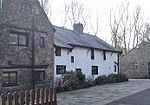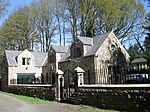Worthington Lakes is a series of three reservoirs in Lancashire (from south to north: Worthington, Arley and Adlington) close to nearby Standish, off the A5106 Wigan to Chorley road in the north-west of England. They were constructed in the early 1860s to provide the clean water required by the rapidly growing town of Wigan.
Despite being situated in the Douglas Valley the water supply comes from the Parbold hills to the west as River Douglas was considered too polluted to be used for drinking water. The lakes, which are now in the ownership of United Utilities are today part of a 50-acre (20 ha) country park, with a nature reserve and accessible footpaths and used for informal recreation and for angling.A transcript of the public information notice board provided by United Utilities reads:
By the mid 1800s the population of the Wigan area had increased to 30,000 and a crisis arose with increasing demand for clean accessible water.
As a result, a civil engineer, Mr. Rawlinson was commissioned by the local Board of Health to inspect and survey the country around Wigan and report on options for a new water supply scheme. The water course chosen starts to the east of Tunley Moss, becoming Stars Brook, Hic Bibi Brook and finally Buckow Brook before flowing into the River Douglas valley. This was chosen as a suitable site for the Worthington Reservoirs. Just to the northeast of the White Crow Inn, a conduit splits off to feed the Arley and Worthington Reservoirs, while the brook itself left to feed the must northerly Adlington Reservoir.
By 1858 the River Douglas was diverted through a tunnel to the east of the valley to enable work on two earth embankments and water treatment works to be started. The estimated cost for the works including diverted tunnel, treatment plant, 2 dams, mains and pumping station etc. was between £25,000 and £30,000.
Modifications to the site were needed due to a concern about flooding of mines along a geographical fault crossing the site and so another embankment was constructed (Adlington dam) along the fault line. The Douglas Tunnel had to be extended to give a greater capacity and Worthington Dam was created. An additional Act was required due to the extensive modifications at the site. In 1860 the Wigan Waterworks Act received Royal Assent and the works were then constructed. By 1867 the whole works were completed including connection to the distribution system of the Wigan areas.
The Arley and Worthington reservoirs had bypasses to enable them to be operated individually. When the reservoirs are low the earthenware pipeline along the side of the Arley reservoir and the cast iron pipeline along the Worthington reservoir are visible today.
The original treatment process was by slow sand filtration, flowing by gravity from the draw-off tower to the filter beds. The water was piped to a water tank at the foot of the dam and then to a second tank before flowing along a gravity trunk main down the Douglas Valley. The second tank can be seen today, a very long, low building with a pitched roof at the foot of the dam.
Worthington Reservoir when full is about 9 metres deep and has a capacity of 546 million litres. If required the water treatment works today could filter and chlorinate up to 8 million litres of water a day.







